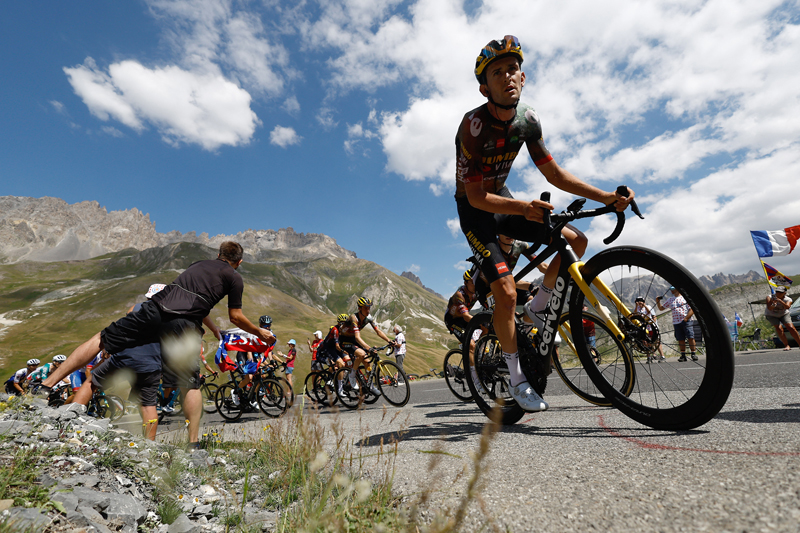Understanding your slow twitch muscle fibres will boost performance
Muscles and muscle fibre What are muscle fibres?
Muscles and muscle fibre
What are muscle fibres?
Muscles – like the rest of the body – are made up of cells, and in muscles these cells form muscle fibres.
Muscle fibres contract to create movement after receiving electrical signals from the brain – a chemical reaction then occurs in the muscle to create muscular activity. Depending on the sport or fitness activity, this chemical reaction can create long- or short-lasting energy (as in the case of a marathon run or a tennis serve respectively).
The specifics of slow-twitch muscle fibre
Slow-twitch muscle fibres are endurance fibres
What makes a muscle slow or fast? This has a lot to do with the number of slow- and fast-twitch muscle fibres a muscle has, and the way these fibres are trained. The more slow-twitch fibres there are, the better the muscle will be at providing lasting energy – see table 1 for examples of the percentages of slow-twitch fibres in the shoulder of selected sports participants. Conversely, the more fast-twitch fibres, the better the muscle will be at generating speed and power. You can change the proportion of the fibres between fast and slow, with the prolonged right training (although research indicates that these changes are not permanent).
Twitch rate
Muscles twitch – basically this reflects their speed of contraction when they are stimulated. Slow-twitch fibres do not have a very fast twitch rate compared to fast-twitch fibres, because they are not designed for speed.
- Twitch rate per second:
- Slow-twitch muscle fibres 10-30
- Fast-twitch 30-70
Slow-twitch fibres have a good blood supply, which greatly assists their ability to generate aerobic energy (that is, energy that relies on oxygen to fuel the chemical reactions going on within the muscles that provide this lasting energy). This oxygen supply capability can be enhanced by the right training.
Slow-twitch fibres can also be called ‘red’ fibres because of their ample blood supply.
Unlike fast-twitch fibre, slow-twitch fibre is less likely to increase muscle size when trained via endurance activities (or weight training). However, well-trained endurance athletes will have slow-twitch fibres that are slightly enlarged, in comparison to non- athletes and speed or power athletes, such as sprinters. But the most ‘noticeable’ endurance training effects occur inside the muscle and manifest themselves on the road, track or water in terms of enhanced endurance ability.
Table 1 displays how slow-twitch fibres can be developed through relevant endurance training. The more endurance training an athlete undertakes, the more slow-twitch muscle fibres they will develop. Compare the figures in the table with non-athletes, who would have around 45-55% slow-twitch fibres in their arms and across their body.
Slow-twitch muscle fibre’s response to endurance training:
- Improved aerobic capacity
- An increase in capillary density. Capillaries are oxygen-carrying highways, and the more capillaries there are in a muscle, the greater the potential for aerobic energy creation
The more endurance-trained a muscle is, the greater its stock of enzymes relevant to other - The more endurance-trained a muscle is, the greater its stock of enzymes relevant to other specific muscular energy creation processes – notably the Krebs cycle. The Krebs cycle is a chemical process that takes place in muscles. Using an analogy, it’s a bit like having your own oil refinery in your car, that keeps producing (cheap!) fuel. In the body’s case, this equally crucial fuel is adenosine triphosphate (ATP). ATP is the key energy-producing chemical in the body.
Table 1: Percentage of slow-twitch fibre in deltoid (shoulder) muscle in males and selected sports
| Endurance athlete | % of slow-twitch fibre in deltoid (shoulder) muscle – males |
|---|---|
| Canoeist | 71% |
| Swimmer | 67% |
| Triathlete | 60% |
Further characteristics of slow-twitch fibre
Muscle fibres – whether slow or fast – are bundled together to form more powerful units (these are known as motor units). They can be equated to cogs in a machine that synchronise with each other to produce, in this case, muscular power. Depending on fibre type, these motor units do not mesh in the same way.
Slow-twitch muscle fibres are recruited synchronously
This means that their motor units work together to produce movement – one ‘cog’ turns another – and all at the same time. This contrasts with fast-twitch fibre, whose motor unit cogs are recruited asynchronously.
Basically, the smallest cogs (ie, the slow-twitch fibres’ smaller motor units) turn first and then the larger ones (fast-twitch fibres) only once the athlete mentally stimulates them to do so. This can be achieved by psyching oneself up and becoming aggressive and explains why, for example, it is difficult to lift a heavy weight without being in the zone.
With slow-twitch fibres, less mental effort is required to fire them, until the athlete is fatigued. If you don’t put a lot of mental effort in when jumping, for example, you won’t jump that high (and you’ll be using your slow-twitch and intermediate fast-twitch fibres). To jump high you have to engage the larger, fast-twitch motor units, and this needs greater mental effort.
Slow-twitch muscle fibres provide a stabilising function within muscles
The percentage of slow-twitch and fast-twitch muscles fibres varies between muscles. The gastrocnemius – the larger of the calf muscles – has a greater percentage of fast-twitch fibres in comparison to the smaller soleus. Balance and stability work tends to target the muscles with the greater proportion of slow-twitch muscle fibres, whereas those with more fast-twitch fibres are more power- and movement-orientated. Thus a single leg balance, from a standing-on-tiptoes position, will emphasise the slow-twitch fibres of the soleus, while a straight leg jump will primarily recruit the fast-twitch muscle fibres of the gastrocnemius.
Newsletter Sign Up
Testimonials
Dr. Alexandra Fandetti-Robin, Back & Body Chiropractic
Elspeth Cowell MSCh DpodM SRCh HCPC reg
William Hunter, Nuffield Health
Newsletter Sign Up
Coaches Testimonials
Dr. Alexandra Fandetti-Robin, Back & Body Chiropractic
Elspeth Cowell MSCh DpodM SRCh HCPC reg
William Hunter, Nuffield Health
Keep up with latest sports science research and apply it to maximize performance
Today you have the chance to join a group of athletes, and sports coaches/trainers who all have something special in common...
They use the latest research to improve performance for themselves and their clients - both athletes and sports teams - with help from global specialists in the fields of sports science, sports medicine and sports psychology.
They do this by reading Sports Performance Bulletin, an easy-to-digest but serious-minded journal dedicated to high performance sports. SPB offers a wealth of information and insight into the latest research, in an easily-accessible and understood format, along with a wealth of practical recommendations.
*includes 3 coaching manuals
Get Inspired
All the latest techniques and approaches
Sports Performance Bulletin helps dedicated endurance athletes improve their performance. Sense-checking the latest sports science research, and sourcing evidence and case studies to support findings, Sports Performance Bulletin turns proven insights into easily digestible practical advice. Supporting athletes, coaches and professionals who wish to ensure their guidance and programmes are kept right up to date and based on credible science.









